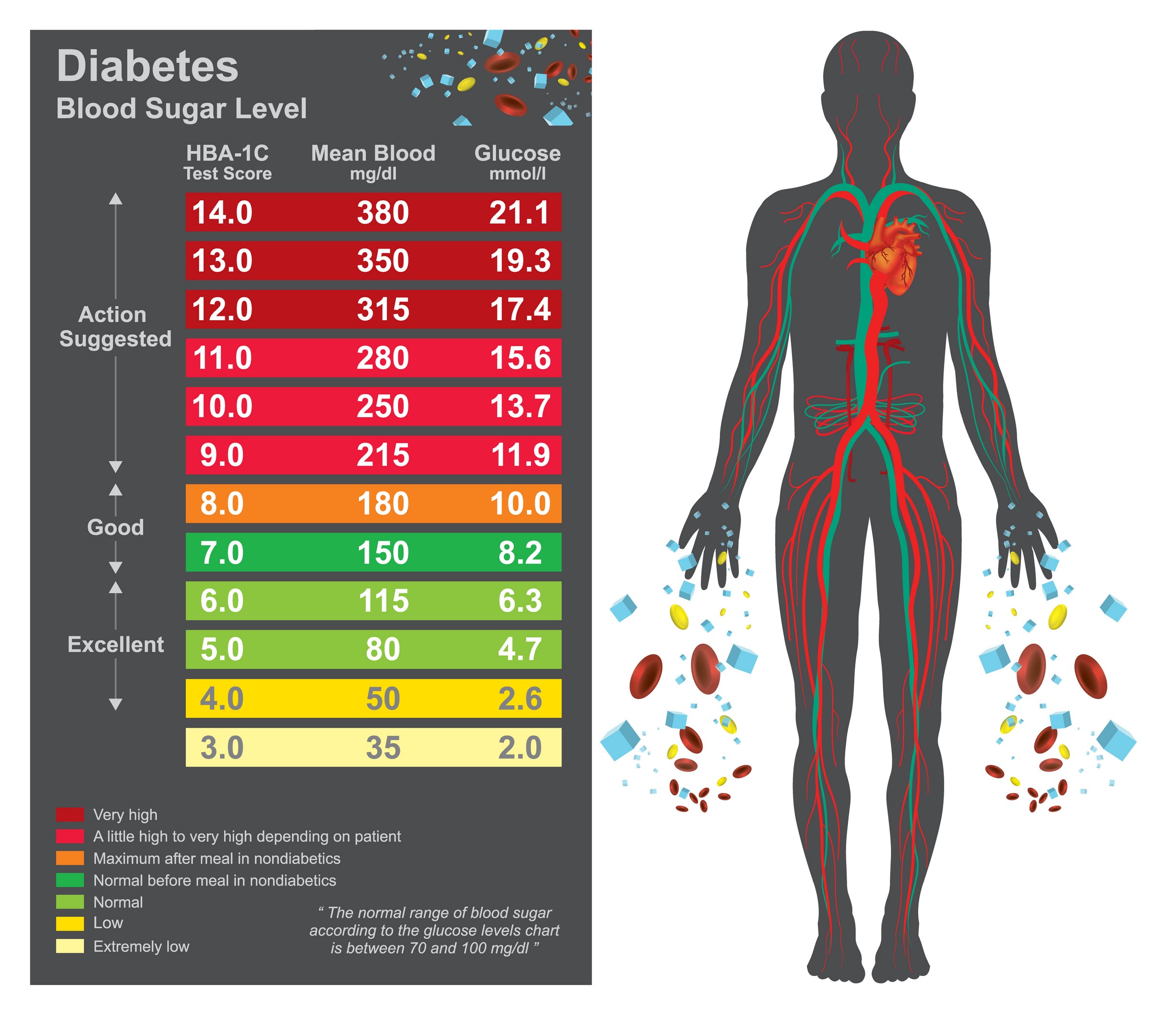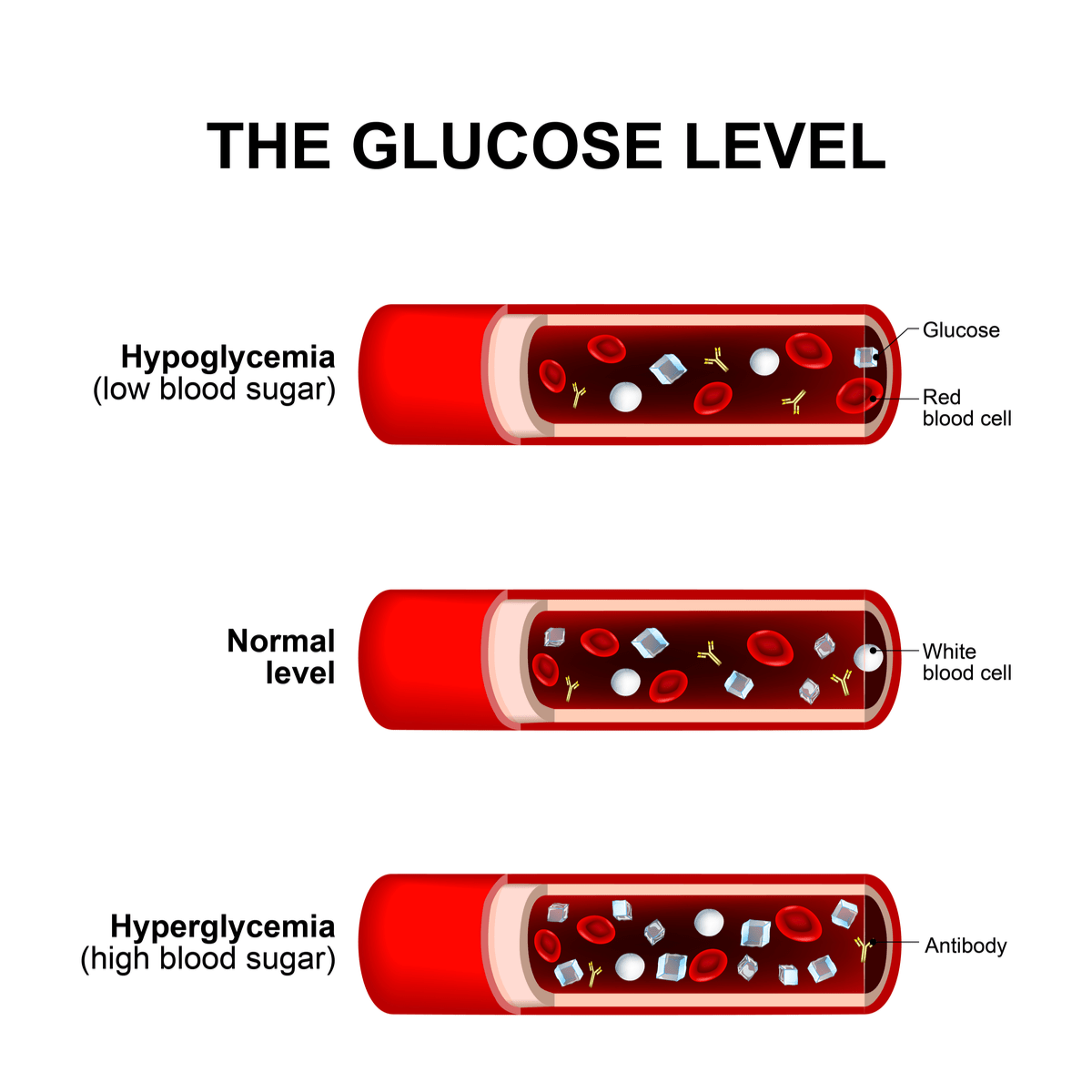Do you know that Hyperglycemia In Canines: Understanding Elevated Blood Sugar Levels can be a serious condition for your furry friend? It’s a condition that can affect any dog, and it’s important to understand the causes, symptoms, and treatment options so you can help your dog live a long and healthy life.
Hyperglycemia is a condition in which the blood sugar levels in the body are too high. This can happen for a number of reasons, including diabetes, pancreatitis, Cushing’s disease, and certain medications. When blood sugar levels are too high, it can lead to a number of health problems, including dehydration, weight loss, weakness, and even death.
High blood sugar (hyperglycemia) and diabetic ketoacidosis – Source www.diabinfo.de
The symptoms of hyperglycemia can vary depending on the severity of the condition. Some common symptoms include increased thirst, frequent urination, weight loss, lethargy, and weakness. If you think your dog may be experiencing hyperglycemia, it’s important to take them to the vet right away for diagnosis and treatment.
Hyperglycemia In Canines: Understanding Elevated Blood Sugar Levels and related keywords
Hyperglycemia is a condition that can affect any dog, regardless of age, breed, or sex. However, certain breeds are more prone to developing hyperglycemia than others. These breeds include:
- Poodles
- Schnauzers
- Dachshunds
- Yorkshire Terriers
- Golden Retrievers
- Labrador Retrievers

High Blood Sugar (Hyperglycemia) – Diabetes Daily – Source www.diabetesdaily.com
Hyperglycemia can be a serious condition, but it can be managed with proper treatment. Treatment options for hyperglycemia include insulin therapy, oral medications, and diet. If your dog is diagnosed with hyperglycemia, it’s important to work closely with your vet to develop a treatment plan that is right for your pet.
There are a number of things you can do to help prevent hyperglycemia in your dog. These include:
- Feeding your dog a healthy diet
- Getting your dog regular exercise
- Monitoring your dog’s blood sugar levels
- Avoiding giving your dog sugary treats
- Being aware of the signs and symptoms of hyperglycemia.

Gestational Diabetes FDAR – Date and Time Ward Notes Signature 06-10 – Source www.studocu.com
Hyperglycemia In Canines: Understanding Elevated Blood Sugar Levels
In order to understand hyperglycemia in canines, it is important to first understand how blood sugar is regulated in the body. Blood sugar is the main source of energy for the body, and it is derived from the food that we eat. When we eat, our food is broken down into glucose, which is then absorbed into the bloodstream. The pancreas, an organ located behind the stomach, produces insulin, a hormone that helps glucose enter cells for energy.
In dogs with hyperglycemia, the body either does not produce enough insulin, or the insulin that is produced does not work properly. This causes glucose to build up in the bloodstream, leading to hyperglycemia.

Hba1c Conversion Table Nhs | Brokeasshome.com – Source brokeasshome.com
The History and Myth of Hyperglycemia In Canines: Understanding Elevated Blood Sugar Levels
Hyperglycemia has been around for centuries, and it has been mentioned in medical texts since at least the 16th century. In the early days, hyperglycemia was often fatal, as there was no effective treatment. However, in the 1920s, insulin was discovered, and this revolutionized the treatment of hyperglycemia.
There are a number of myths surrounding hyperglycemia. One myth is that hyperglycemia is only a problem for humans. However, hyperglycemia can affect any mammal, including dogs. Another myth is that hyperglycemia is always caused by diabetes. While diabetes is the most common cause of hyperglycemia, there are a number of other conditions that can also lead to hyperglycemia.

How to control sugar level ~ Blood Sugar fact – Source bloodsugarfact.blogspot.com
The Hidden Secret of Hyperglycemia In Canines: Understanding Elevated Blood Sugar Levels
There is a hidden secret about hyperglycemia in canines that many people don’t know. This secret is that hyperglycemia can actually be a sign of another underlying medical condition. If your dog has hyperglycemia, it’s important to take them to the vet for a complete checkup to rule out any other health problems.
Some of the other medical conditions that can cause hyperglycemia include pancreatitis, Cushing’s disease, and certain types of cancer. By ruling out these other conditions, your vet can help you determine the best course of treatment for your dog’s hyperglycemia.

Diabetic Sugar Level Chart – Financial Report – Source joinelur.com
Recommendation of Hyperglycemia In Canines: Understanding Elevated Blood Sugar Levels
If your dog has been diagnosed with hyperglycemia, there are a number of things you can do to help manage the condition. These include:
- Following your veterinarian’s instructions for insulin therapy or oral medications
- Feeding your dog a healthy diet
- Getting your dog regular exercise
- Monitoring your dog’s blood sugar levels
- Avoiding giving your dog sugary treats
- Being aware of the signs and symptoms of hyperglycemia.

SOLUTION: 278943461 nursing care plan for hypoglycemia – Studypool – Source www.studypool.com
Hyperglycemia In Canines: Understanding Elevated Blood Sugar Levels
Hyperglycemia is a condition that can affect any dog, regardless of age, breed, or sex. However, certain breeds are more prone to developing hyperglycemia than others. These breeds include:
- Poodles
- Schnauzers
- Dachshunds
- Yorkshire Terriers
- Golden Retrievers
- Labrador Retrievers
Hyperglycemia can be a serious condition, but it can be managed with proper treatment. Treatment options for hyperglycemia include insulin therapy, oral medications, and diet. If your dog is diagnosed with hyperglycemia, it’s important to work closely with your vet to develop a treatment plan that is right for your pet.

“Elevated Blood Sugar Levels, Lower Gray Matter Volume, and Their Link – Source belfitz.link
Tips for Hyperglycemia In Canines: Understanding Elevated Blood Sugar Levels
Here are some tips for preventing hyperglycemia in your dog:
- Feed your dog a healthy diet that is low in carbohydrates and high in fiber.
- Get your dog regular exercise to help them maintain a healthy weight.
- Monitor your dog’s blood sugar levels regularly, especially if they are at risk for developing hyperglycemia.
- Avoid giving your dog sugary treats.
- Be aware of the signs and symptoms of hyperglycemia, such as increased thirst, frequent urination, weight loss, lethargy, and weakness.
![25 Printable Blood Sugar Charts [Normal, High, Low] - Template Lab 25 Printable Blood Sugar Charts [Normal, High, Low] - Template Lab](https://templatelab.com/wp-content/uploads/2016/09/blood-sugar-chart-12-screenshot.png)
25 Printable Blood Sugar Charts [Normal, High, Low] – Template Lab – Source templatelab.com
Hyperglycemia In Canines: Understanding Elevated Blood Sugar Levels
Hyperglycemia is a condition that can affect any dog, regardless of age, breed, or sex. However, certain breeds are more prone to developing hyperglycemia than others. These breeds include:
- Poodles
- Schnauzers
- Dachshunds
- Yorkshire Terriers
- Golden Retrievers
- Labrador Retrievers
Hyperglycemia can be a serious condition, but it can be managed with proper treatment. Treatment options for hyperglycemia include insulin therapy, oral medications, and diet. If your dog is diagnosed with hyperglycemia, it’s important to work closely with your vet to develop a treatment plan that is right for your pet.

Chart of Normal Blood Sugar Levels for Adults with Diabetes – Breathe – Source www.breathewellbeing.in
Fun Facts of Hyperglycemia In Canines: Understanding Elevated Blood Sugar Levels
Here are some fun facts about hyperglycemia in canines:
- Hyperglycemia can affect any dog, regardless of age, breed, or sex.
- Certain breeds are more prone to developing hyperglycemia than others, including poodles, schnauzers, dachshunds, Yorkshire terriers, golden retrievers, and Labrador retrievers.
- Hyperglycemia can be a serious condition, but it can be managed with proper treatment.
- Treatment options for hyperglycemia include insulin therapy, oral medications, and diet.
- If your dog is diagnosed with hyperglycemia, it’s important to work closely with your vet to develop a treatment plan that is right for your pet.
How to Hyperglycemia In Canines: Understanding Elevated Blood Sugar Levels
There are a few things you can do to help prevent hyperglycemia in your dog:
- Feed your dog a healthy diet that is low in carbohydrates and high in fiber.
- Get your dog regular exercise to help them maintain a healthy weight.
- Monitor your dog’s blood sugar levels regularly, especially if they are at risk for developing hyperglycemia.
- Avoid giving